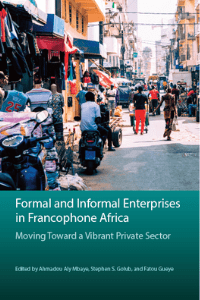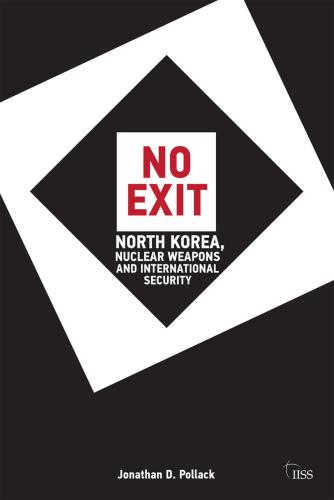Poor infrastructure continues to hinder economic growth in sub-Saharan Africa. Moreover, according to a recent publication by McKinsey and Company, the region’s attempts to address these gaps have often resulted in infrastructure projects that never move beyond the planning stages. More specifically, the McKinsey report finds that, although international investors have sufficient appetite and capital to fund African infrastructure projects, “80 percent of infrastructure projects fail at the feasibility and business-planning stage.” The authors describe this phenomenon as “Africa’s infrastructure paradox,” where, in the midst of high demand for projects, sufficient supply of capital and investors, and voluminous potential projects, there is insufficient investment in infrastructure projects within the region.
One of the biggest gaps for sub-Saharan Africa is in access to reliable electricity—a more pressing problem than ever due to growing reliance on technology for remote work and learning in the face of the COVID-19 pandemic. In fact, McKinsey finds that more than two-thirds of the global population without electricity is in sub-Saharan Africa (Figure 1)—though there is significant heterogeneity within the region, with countries in the south and west better connected than those in central Africa and Somalia. Notably, sub-Saharan Africa is not only behind in access itself, but is also falling behind in closing that gap: For example, despite having roughly similar population sizes, India expanded access to electricity to an additional 100 million people in 2018. In contrast, sub-Saharan Africa only expanded access to 20 million people. Given McKinsey also forecasts that African demand for electricity will quadruple from 2010 to 2040, the need for improved electricity infrastructure will only grow in the coming years.
Figure 1. Africa’s share of the global population without electricity by region
Source: McKinsey and Company, Solving Africa’s infrastructure paradox, 2020.
In order to close Africa’s infrastructure gap, the authors predict that infrastructure investment as a share of GDP must rise to 4.5 percent from the approximately 3.5 percent that has persisted since 2000. To achieve this goal, the authors write, annual investment in infrastructure must double between 2015 and 2025, manifesting in $150 billion in 2025. Though rising debt-to-GDP ratios for African governments may limit sovereign spending on infrastructure, the authors note that the appetite of international investors for African infrastructure projects remains promising.
While a significant share of current investment in African infrastructure is dominated by China, Figure 2, which shows McKinsey’s estimate of the composition of potential international investors by location and type, implies that other players look to be getting into the game. The United States comprises the lion’s share of the appetite for African investment, accounting for 38 percent of the investment potential’s country of origin. Trailing by a wide margin is the United Arab Emirates, China, and the United Kingdom. The types of international investors are more evenly split between government agencies, private and public pensions, investment companies, and banks. The McKinsey analysis estimates that these international investors could unlock $550 billion in assets under management for African infrastructure projects.
Figure 2. The composition of potential international funding for African infrastructure projects
Source: McKinsey and Company, Solving Africa’s infrastructure paradox, 2020.
The volume and value of current African infrastructure projects is immense: McKinsey estimates that $2.5 trillion in active projects will be completed by 2025. However, the authors warn that not all of those projects come to fruition, as more than 50 percent remain in the feasibility stage of development.
Indeed, the success rate of completing infrastructure projects in the region remains low (Figure 3). Along the project pipeline stages, there is a precipitous drop-off in project progression. As such, only 20 percent of projects survive the feasibility and planning stage, and only half of those projects achieve financial close. In other words, as the authors write, only 10 percent of all projects become realized.
Figure 3. Infrastructure project pipeline success rate by stages
Source: McKinsey and Company, Solving Africa’s infrastructure paradox, 2020.
The authors suggest six reasons for the low success rate of these infrastructure projects, each stemming from market failures within early stages of project development:
- Limited deal pipeline or selection of low-impact projects
- Weak feasibility study and business plan
- Delays in obtaining licenses, approvals, and permits
- Inability to agree on risk allocations
- Inability to secure offtake agreements and guarantees
- Poor program delivery
In order to resolve Africa’s infrastructure paradox, the authors outline a critical need for governments and multilateral development institutions to expand the flow of private-sector financing into more commercially viable assets, reallocate government financing away from the most commercially viable assets to avoid crowding out the private sector, and bolster collaboration and partnership with multilateral and national financial institutions. Implementing reforms aimed at facilitating capital inflow, the authors say, will enable governments to magnify the funding for the substantial pipeline of projects, strengthen resolve to overcome crippling market failures at early stages of project development, and overshadow the lingering unmet infrastructure needs due to a history of underinvestment in the region.
For more on building African infrastructure, read “The road ahead for fixing Africa’s infrastructure deficit” and “Figures of the week: Infrastructure quality in Africa is stagnating.”
For more on financing African infrastructure development, read “Financing African infrastructure through pension funds,” “Figures of the week: Africa’s infrastructure needs are an investment opportunity,” and “Closing the financing gap for African energy infrastructure: Trends, challenges, and opportunities.”
The Brookings Institution is committed to quality, independence, and impact.
We are supported by a diverse array of funders. In line with our values and policies, each Brookings publication represents the sole views of its author(s).












Commentary
Figures of the week: Africa’s infrastructure paradox
February 24, 2021